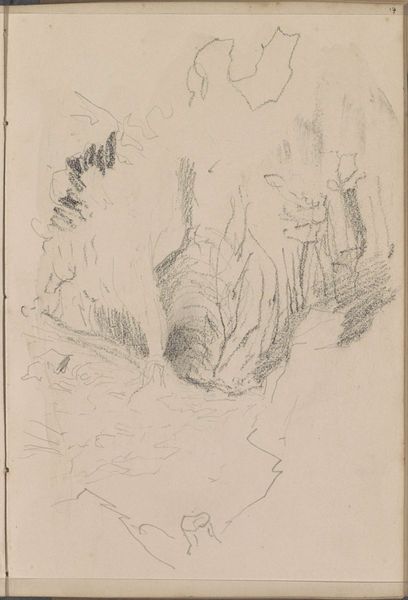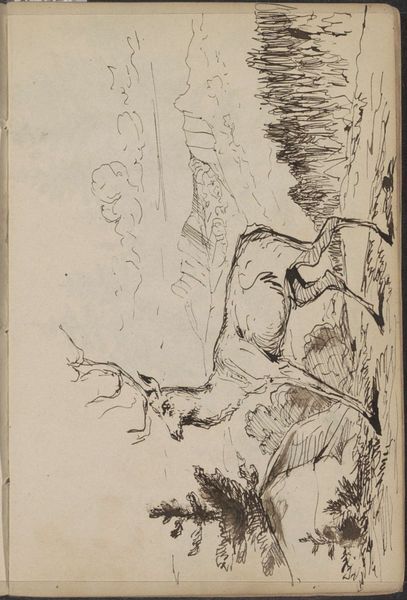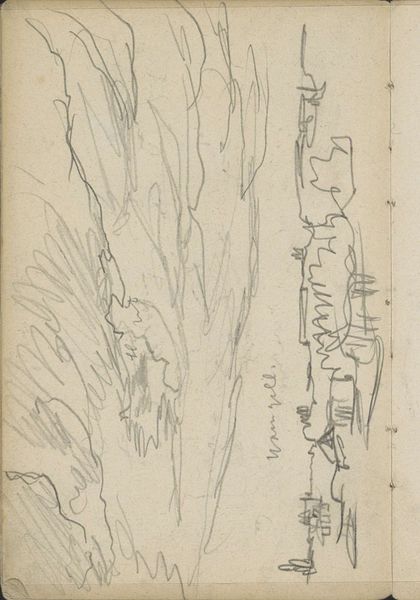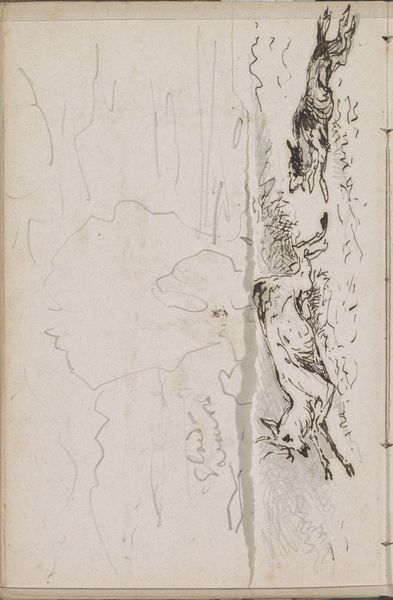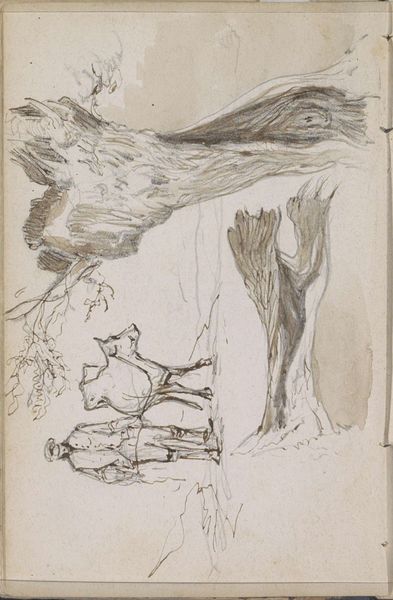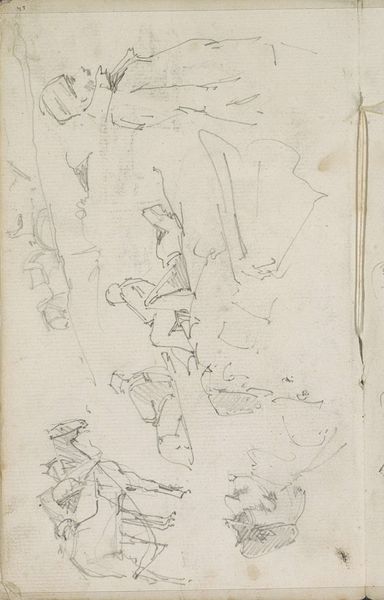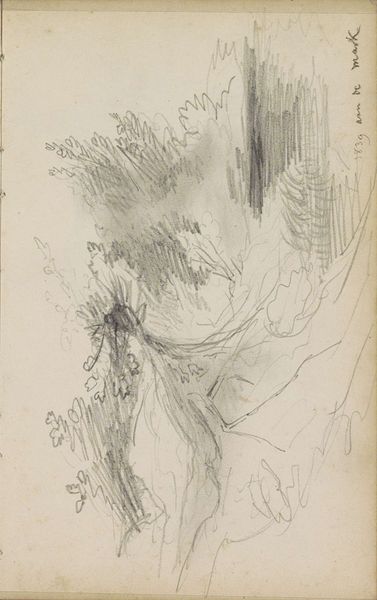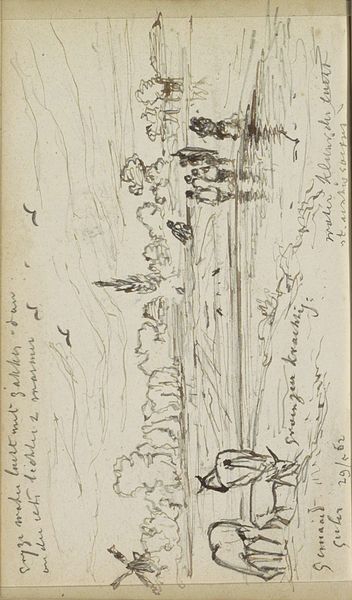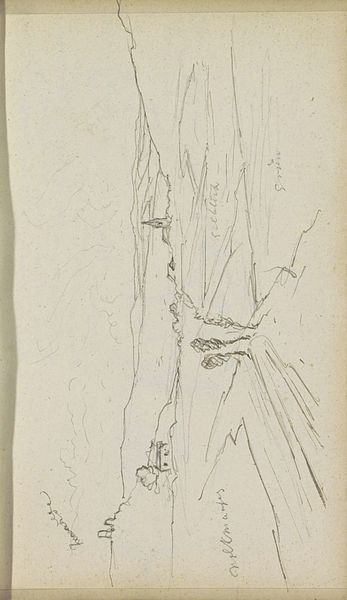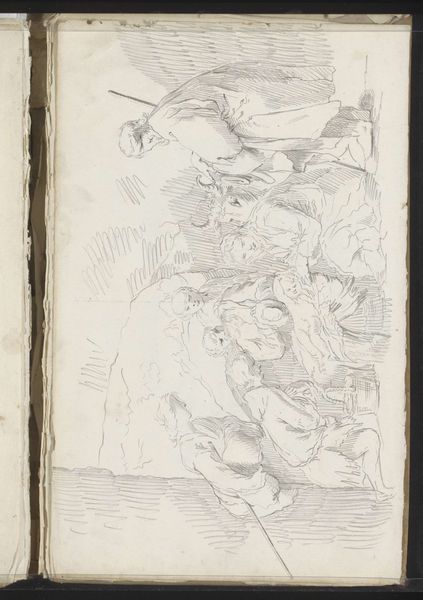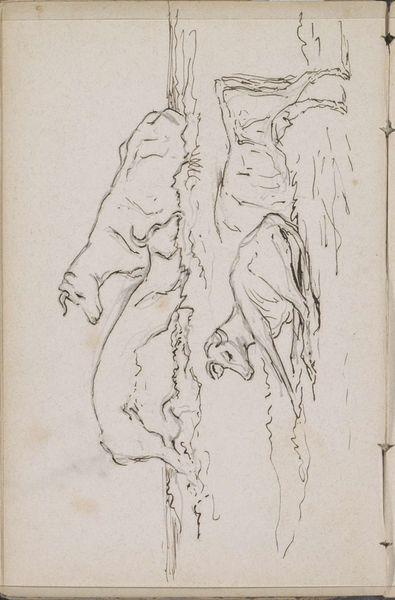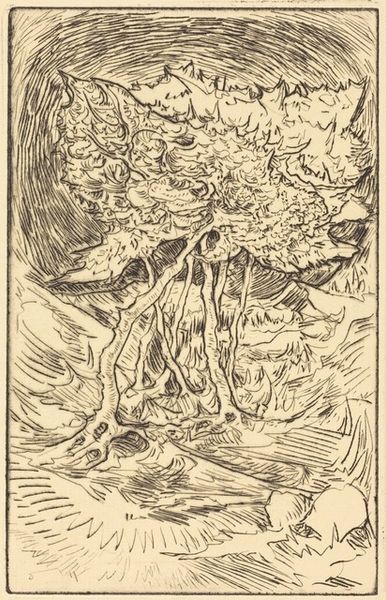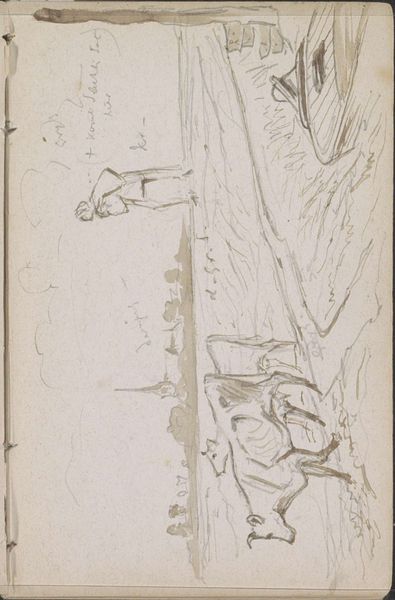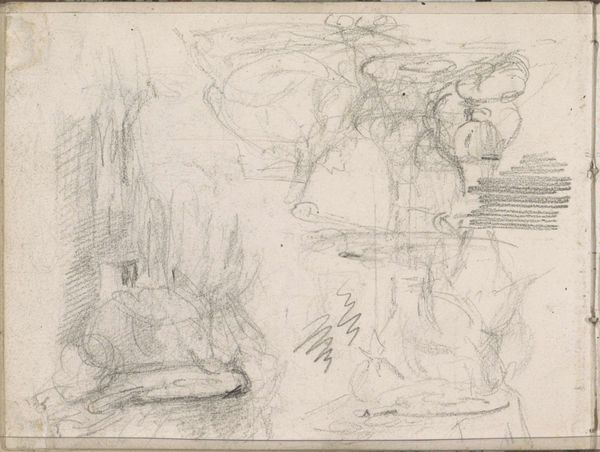
drawing, paper, ink, pen
#
drawing
#
landscape
#
figuration
#
paper
#
ink
#
pen
#
realism
Copyright: Rijks Museum: Open Domain
Curator: Here we have Johannes Tavenraat's pen and ink drawing on paper, "Deer by a Tree," created between 1862 and 1864. Editor: My immediate impression is one of vulnerability, a captured moment almost like looking at the deer as if through a hunter's scope. There’s a sketchiness that doesn't hide anything, offering rawness. Curator: That resonates with how Tavenraat’s realism approaches the subject matter. Deer often carry strong symbolic weight, signifying innocence, gentleness, or the wild. By drawing them here, near what seems like the edges of a forest, the picture sets up that opposition between nature and human development or control. Editor: It also hints at the romanticism intertwined with realism, the longing for nature which, especially when this work was produced, had a very male, colonial association with possession. The deer appear, in a way, to almost be arranged on display under the sparse shelter of the tree's "roof". It raises difficult questions about our relationship with the natural world, doesn't it? Curator: I agree, and look at the marks made with the pen – the quick, nervous lines contrasting with darker pools of ink for shadow, and a sense of immediacy, almost like capturing a fleeting glimpse before it's gone, the lines creating emotional context too, that resonate between beauty and discomfort. Editor: Considering that during this era, access to nature wasn't democratized but dependent on social hierarchy, I question for whom Tavenraat painted this scene. Who gets to be nostalgic for an idea of untouched wilderness when the concept itself is tangled up in historical power dynamics? And that informs what viewers saw then, and even what we might see now. Curator: That adds new layers to the drawing; it asks to go further than a pleasing landscape—maybe it encourages questioning of what we define as “nature” itself, and of how representation inevitably entangles even the most ‘innocent’ of subjects. Editor: Precisely! It encourages me to consider the implications behind the aesthetics, behind what otherwise might appear a pastoral, tranquil scene. The work invites this dialogue between art and lived experience. Curator: For me too, that sense of capturing cultural memory is amplified – how symbols of nature retain significance across decades, provoking continuous re-evaluation. Editor: Absolutely. We carry inherited narratives. Art offers a vital chance to critically question and dismantle them.
Comments
No comments
Be the first to comment and join the conversation on the ultimate creative platform.
